Source:Xinhua 2015-01-31
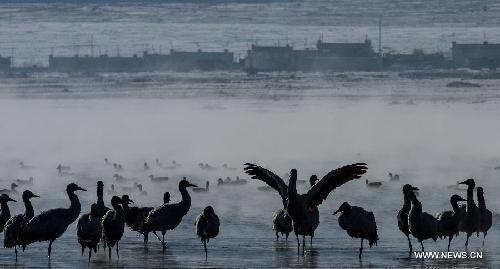
Black-necked cranes are seen in the Linzhou County, southwest China's Tibet Autonomous Region, Jan. 9, 2015. The number of black-necked cranes, the first-level state protected wildlife, has kept rising in the past years thanks to a series of protection measures taken in Tibet. (Xinhua/Purbu Zhaxi)
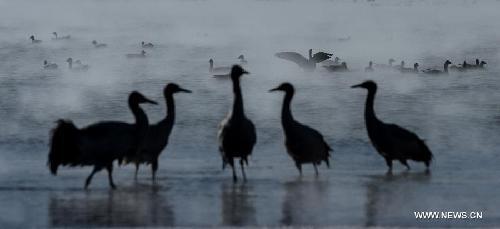
Black-necked cranes are seen in the Linzhou County, southwest China's Tibet Autonomous Region, Jan. 9, 2015. The number of black-necked cranes, the first-level state protected wildlife, has kept rising in the past years thanks to a series of protection measures taken in Tibet. (Xinhua/Purbu Zhaxi)
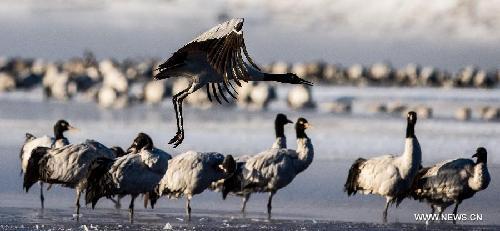
Black-necked cranes are seen in the Linzhou County, southwest China's Tibet Autonomous Region, Jan. 9, 2015. The number of black-necked cranes, the first-level state protected wildlife, has kept rising in the past years thanks to a series of protection measures taken in Tibet. (Xinhua/Purbu Zhaxi)\
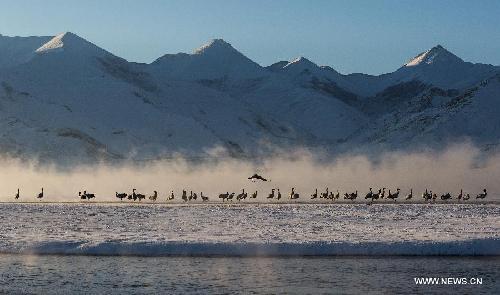
Black-necked cranes are seen in the Linzhou County, southwest China's Tibet Autonomous Region, Jan. 9, 2015. The number of black-necked cranes, the first-level state protected wildlife, has kept rising in the past years thanks to a series of protection measures taken in Tibet. (Xinhua/Purbu Zhaxi)
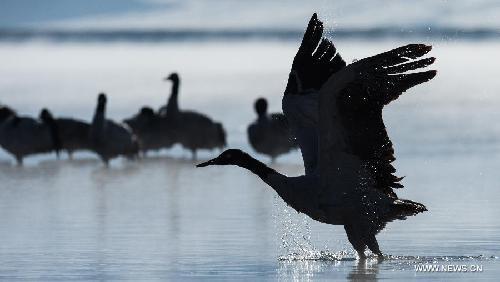
Black-necked cranes are seen in the Linzhou County, southwest China's Tibet Autonomous Region, Jan. 9, 2015. The number of black-necked cranes, the first-level state protected wildlife, has kept rising in the past years thanks to a series of protection measures taken in Tibet. (Xinhua/Purbu Zhaxi)
Copyright © Xizang Daily & China Xizang News All rights reserved
Reproduction in whole or in part without permissions prohibited
Index Code: 藏 ICP 备 05000021 号
Producer: Xizang Daily International Communication Center